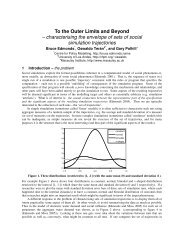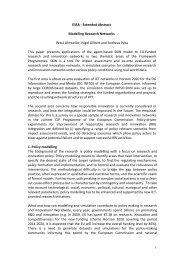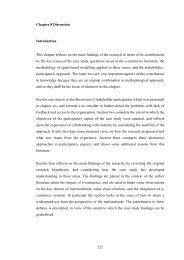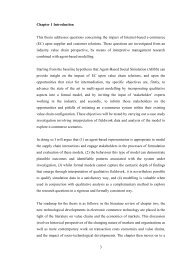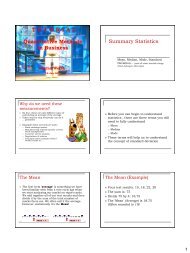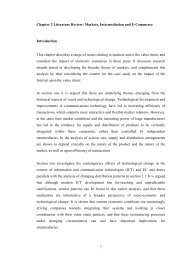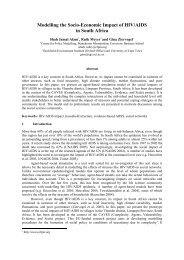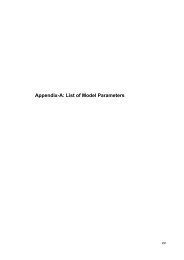1 Agent-Based Modelling Incorporating Qualitative and Quantitative ...
1 Agent-Based Modelling Incorporating Qualitative and Quantitative ...
1 Agent-Based Modelling Incorporating Qualitative and Quantitative ...
You also want an ePaper? Increase the reach of your titles
YUMPU automatically turns print PDFs into web optimized ePapers that Google loves.
The research questions therefore centred on the impact of Internet-based e-commerce upon<br />
intermediaries role <strong>and</strong> market share, upon the internal processes, efficiency improvements <strong>and</strong><br />
resource savings that could be realised, <strong>and</strong> the identification of inhibitors <strong>and</strong> incentives for<br />
customer adoption of the electronic mall. Section 1 identified a number of research propositions<br />
<strong>and</strong> hypotheses from the literature in this area: other questions were raised by stakeholders at the<br />
inception of the project, <strong>and</strong> emerged during the evaluation phase. For example, they were<br />
interested in underst<strong>and</strong>ing better the impact of e-commerce upon internal productivity <strong>and</strong> upon<br />
the company’s reputation amongst customers. Some of these issues would be addressed with<br />
fieldwork interpretation <strong>and</strong> some by means of the ABSS modelling, as described in the following<br />
section.<br />
3. Methodology<br />
The research methodology outlined in this section incorporates agent-based social simulation<br />
(ABSS) with qualitative fieldwork <strong>and</strong> stakeholder participation in the design <strong>and</strong> evaluation<br />
phases. The research therefore draws upon several different paradigms <strong>and</strong> combines individual<br />
methods, in particular integrating the qualitative with the quantitative. We emphasize here that the<br />
qualitative nature of this research allows a perspective that is fundamentally inclusive because it<br />
permits collection of a wide spectrum of different data types. The approach is justified by the<br />
argument that flexibility in choice of research methods allows a richer underst<strong>and</strong>ing to develop of<br />
complex issues such as the impact of technological change. This is what Mingers (2001) terms<br />
strong pluralism where "all research situations are seen as inherently complex <strong>and</strong><br />
multidimensional, <strong>and</strong> would thus benefit from a range of methods." It is argued that the research<br />
presented herein exemplifies this multi-methodology approach.<br />
The methods outlined in Table 1 below each contribute significantly to the research design, <strong>and</strong> as<br />
we shall argue, complement each other well in developing a richer underst<strong>and</strong>ing <strong>and</strong> meeting our<br />
research aims. By the definition of Mingers, this design is multi-method. The methods are listed<br />
with the corresponding research approach (underlying philosophical perspective of the research)<br />
<strong>and</strong> the type of data which we are at each stage working with:<br />
10




